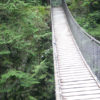C amping would be the appropriate lodging for a safari, I thought. Sure, there are options where you can spend thousands of dollars for a “luxury” safari experience; but to me, that would seem to — the point about going on a safari in the first place.
Even though there are two lodging options from which you could choose through Nomad Africa Adventure Tours pertaining to this the tour on which I participated — a camping option and an “accommodated” option, which cost approximately $85.00 more — all participants of the safari get the same accommodations at this campsite, where two of the three nights are spent. I will cover the third night in a future article.
After being on the road for three hours — we had departed from the Sentrim Boulevard Hotel in Nairobi and traveled through the Great Rift Valley — we stopped off at what was to become our home for the next two nights: a campsite where we can drop off our belongings and have a late lunch before going on an afternoon safari.

The campsite is located near a Masai village only several kilometers from the main entrance of the Masai Mara National Reserve; and despite the area overall being wide open and basically barren of trees for the most part, this campsite was wooded.

Here was the tent to which I was assigned — and I did not have to share it with anyone despite not paying a supplement for lodging as a single person:

I initially thought that participants of the safari were required to pitch their own tents; so I was prepared to do that. Imagine being pleasantly surprised upon seeing that not only was the tent already pitched and ready to occupy; but that it was also housed by a wooden structure.

I had unzipped the entrance to the tent and walked inside. I did not expect for there to be two beds and a rug.

One of the beds was already prepared and ready to use. I did not have to use the sleeping bag I brought with me after all on this portion of the safari experience.

The other bed was not prepared, which is what I had originally expected. Had that been the case with both beds, I would have then used my sleeping bag.

The toilets and showers for the men were located in a dark green building only meters away from the tents; while the facilities for women were located in a light green building which you can see on the left side in the photograph shown above as well as in the center of the photograph shown below.

As there are no plumbing facilities — there is not even a paved road for dozens of kilometers, in fact — the water system is the huge black tank located above the building, with the water heated by a fire located in the rear of the buildings…

…and electricity for the campsite was powered by the generator shown in the photograph below:

Amazingly, one participant was told that this option of generating electricity — primarily used for the lights and pumping of water — was still currently more economical than using light-emitting diode lights powered with solar panels. I suppose the cost of solar-powered lights has to be further reduced for that to be an option.

I am not sure for what use or purpose was the homemade ladder shown in the above photograph; but it was located on the side of the dining hall — and it also shows the entrance to the campsite in the background.


I am not partial to beef stew; so I had a little sample of it for the first meal we were served for lunch before embarking on an afternoon safari.

The food was quite tasty — and coincidentally, I was really in the mood for rice that day. I was glad that fulfilling that craving became a reality.
Once we finished lunch, we took advantage of an opportunity to meet with the local Masai people in their village — which was included in the price of the safari package and was probably a walk of perhaps ten minutes from the campsite — before embarking on a late afternoon safari…

…and I will post additional details about that experience in a future article as well…

